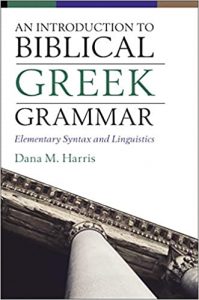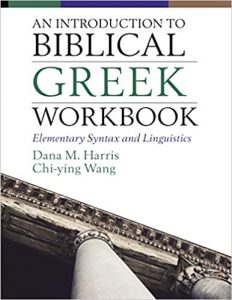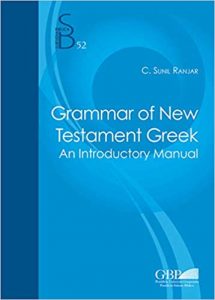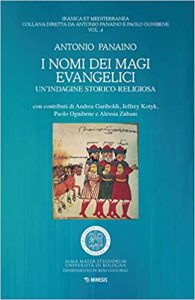ROSS, W. A. ; GLENNY, W. E. (eds.) T&T Clark Handbook of Septuagint Research. London: T&T Clark, 2021, 512 p. – ISBN 978-0567680259.
Hoje estudantes e estudiosos reconhecem a grande importância da Septuaginta para a história da língua grega, o desenvolvimento textual da Bíblia e para a vida religiosa judaica e cristã tanto no mundo antigo quanto no mundo moderno. Este manual foi elaborado para aqueles que desejam se envolver com a Septuaginta em suas pesquisas, mas não têm certeza de onde buscar orientação ou discussão concisa e atualizada. Os colaboradores quebram as barreiras envolvidas nos debates técnicos e subespecialidades, tanto quanto possível, equipando os leitores com as ferramentas e o conhecimento necessários para conduzir suas próprias pesquisas.
Cada capítulo é escrito por um importante estudioso da Septuaginta e enfoca uma área relevante de pesquisa na disciplina, fornecendo uma visão geral do tópico, os principais debates e pontos de vista, os métodos envolvidos e o rumo das pesquisas em andamento. Ao explorar origens, linguagem, texto, recepção, teologia, tradução e comentários, este manual incentiva o envolvimento ativo com as questões mais importantes no campo e fornece um recurso essencial para especialistas e não especialistas.
os principais debates e pontos de vista, os métodos envolvidos e o rumo das pesquisas em andamento. Ao explorar origens, linguagem, texto, recepção, teologia, tradução e comentários, este manual incentiva o envolvimento ativo com as questões mais importantes no campo e fornece um recurso essencial para especialistas e não especialistas.
Students and scholars now widely recognize the importance of the Septuagint to the history of the Greek language, the textual development of the Bible, and to Jewish and Christian religious life in both the ancient and modern worlds. This handbook is designed for those who wish to engage the Septuagint in their research, yet have been unsure where to turn for guidance or concise, up-to-date discussion. The contributors break down the barriers involved in the technical debates and sub-specialties as far as possible, equipping readers with the tools and knowledge necessary to conduct their own research.
Each chapter is written by a leading Septuagint scholar and focuses upon a major area of research in the discipline, providing an overview of the topic, key debates and views, a survey or demonstration of the methods involved, and pointers towards ongoing research questions. By exploring origins, language, text, reception, theology, translation, and commentary, with a final summary of the literature, this handbook encourages active engagement with the most important issues in the field and provides an essential resource for specialists and non-specialists alike.
SUMÁRIO
Lists of Tables and Figures
Preface – William A. Ross and W. Edward Glenny
Foreword – Robert P. Gordon
Lists of Abbreviations and Sigla
Introduction – William A. Ross
I. ORIGINS
The Origins and Social Context of the Septuagint – James K. Aitken
Septuagint Translation Technique and Jewish Hellenistic Exegesis – Marieke Dhont
II. LANGUAGE
Septuagint Transcriptions and Phonology – Pete Myers
Septuagint Lexicography – Patrick Pouchelle
The Septuagint and Discourse Grammar – Christopher J. Fresch
The Septuagint and Greek Style – Eberhard Bons
The Septuagint and Biblical Intertextuality – Myrto Theocharous
III. TEXT
The Septuagint and Textual Criticism of the Greek Versions – José Manuel Cañas Reíllo
The Septuagint and Textual Criticism of the Hebrew Bible – John Screnock
The Septuagint and Qumran – Gideon R. Kotzé
The Septuagint and the Major Recensions – Ville Mäkipelto
The Septuagint and the Secondary Versions – Claude Cox
The Septuagint and Origen’s Hexapla – Peter J. Gentry
The Septuagint and the Biblical Canon – John Meade
IV. RECEPTION
The Septuagint and Second Temple Judaism – Benjamin G. Wright III
The Septuagint in the New Testament – Steve Moyise
The Septuagint in Patristic Sources – Edmon L. Gallagher
The Septuagint in Byzantine Judaism – Cameron Boyd-Taylor
The Septuagint in the Eastern Orthodox Tradition – Mikhail G. Seleznev
The Septuagint in Early Modern Europe – Scott Mandelbrote
V. THEOLOGY, TRANSLATION, AND COMMENTARY
The Septuagint and Theology – W. Edward Glenny
The Septuagint and Modern Language Translations – William A. Ross
The Septuagint: The Text as Produced – Robert J. V. Hiebert
The Septuagint: A Greek-Text Oriented Approach – Stanley E. Porter
VI. SURVEY OF LITERATURE
The Septuagint and Contemporary Study – Jennifer Brown Jones
Glossary
List of Contributors
References
Indices
William A. Ross is assistant professor of Old Testament at Reformed Theological Seminary in Charlotte, NC, USA. W. Edward Glenny is professor of New Testament and Greek at the University of Northwestern – St. Paul, MC, USA.






